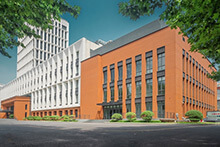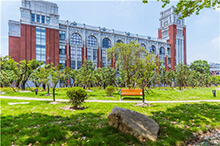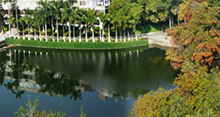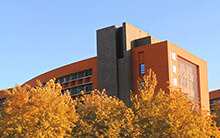Add 桃子姐学姐微信
为你全程答疑

送翻硕资源、报录数据等
2014年兰大真题暂无,为您提供2013年真题以供参考。
I. Direction:Translate the following words, abbreviations or terminology into their target language respectively. (30’) I. CSCAP 2. NASA 3.UNCID 4. UNCRD 5. ICAO
6. Non-Aligned Movement
7. the United Nations General Assembly 8. permanent council
9. the American Federal Reserve committee
10. European Central Bank 11. Central American Common Market 12. Commonwealth (British Commonwealth of Nations) 13. Conference of Non-Aligned Countries
14. Coordinating Committee for Export to Communist Countries 15. International Development Research Centre 16.实际利润 17.收购文件 18,收盘价格 19.收货人 20.自我实现 21.价格操控 22.生活补贴 23.挂职 24.聘任 25.工业化 26.城镇化 27.结构调整 28.协调发展 29.消除贪困 30. 绿色发展
II. Directions: Translate the following two source texts into their target language respectively. (120')
Source text 1: Wireless communication is changing the way people work, live, love and relate to places—and each other, says Andreas Kluth AT THE Nomad Café in Oakland, California, Tia Katrina Canlas, a law student at the nearby university in Berkeley, places her double Americano next to her mobile phone and iPod, opens her MacBook laptop computer and logs on to the café’s wireless internet connection to study for her class on the legal treatment of sexual orientation. She is a regular here but doesn’t usually bring cash, so her credit-card statement reads “Nomad, Nomad, Nomad, Nomad”. That says it all, she thinks. Permanently connected, she communicates by text, photo, video or voice throughout the day with her friends and family, and does her “work stuff” at the same time. She roams around town, but often alights at oases that cater to nomads. Christopher Waters, the owner, opened the Nomad Café in 2003, just as Wi-Fi “hotspots” were mushrooming all around town. His idea was to provide a watering-hole for “techno-Bedouins” such as himself, he says. Since Bedouins, whether in Arabian deserts or American suburbs, are inherently tribal and social creatures, he understood from the outset that a good oasis has to do more than provide Wi-Fi; it must also become a new—or very old—kind of gathering place. He thought of calling his café the “Gypsy Spirit Mission”, which also captures the theme of mobility, but settled for the simpler Nomad. As a word, vision and goal, modern urban nomadism has had the mixed blessing of a premature debut. In the 1960s and 70s Herbert Marshall McLuhan, the most influential media and communications theorist ever, pictured nomads zipping around at great speed, using facilities on the road and all but dispensing with their homes. In the 1980s Jacques Attali, a French economist who was advising president François Mitterrand at the time, used the term to predict an age when rich and uprooted elites would jet around the world in search of fun and opportunity, and poor but equally uprooted workers would migrate in search of a living. In the 1990s Tsugio Makimoto and David Manners jointly wrote the first book with “digital nomad” in the title, adding the bewildering possibilities of the latest gadgets to the vision. But all of those early depictions and predictions of nomadism arguably missed the point. The mobile lifestyles currently taking shape around the world are nothing like those described in the old books. For this the authors cannot be blamed, since the underlying technologies of genuine and everyday nomadism did not exist even as recently as a decade ago. Mobile phones were already widespread, but they were used almost exclusively for voice calls and were fiendishly hard to connect to the internet and even to computers. Laptop computers and personal digital assistants (PDAs) needed fiddly cables to get online, and even then did so at a snail’s pace. Reading and sending e-mail on a mobile phone—not to mention synchronising it across several gadgets and computers to create one “virtual” in-box—was unheard of. People took photos using film. There was no Wi-Fi. In short, there were gadgets, but precious little “connectivity”. 参考译文:无线通讯正改变着人们工作、生活、恋爱的方式;改变了我们与周遭环境,身边朋友之间的联系——安德里克鲁斯(Andrea Kluth)。 加州(California,奥克兰(Oakland):提亚卡特里娜坎拉斯(Tia Katrina Canlas)是加州大学伯克利分校的法学院学生,她坐在游牧咖啡馆(Nomad Café)里,正开着她的mac笔记本,无线上网学习有关“性”犯罪的法律处置课程,而一边是她的双份美式冰咖啡,手机和ipod。她是这儿的常客,但通常不带现金,所以信用卡上账单上总冒出“游牧咖啡,游牧咖啡,游牧咖啡,游牧咖啡“。她认为这很说明问题。永远在线,她用短信、照片、视频、语音整天和朋友家人交流,同时也搞定”工作“。她在城市的任意地方出没,但总是在招待”游牧民“的绿洲落脚。
克里斯托弗沃尔特(Christopher Waters),在2003年开了这家“游牧咖啡”,当时正值Wifi如雨后春笋风靡全市。他的想法就是要给那些“科技贝多因人”(包括他自己)提供一个“水源”。因为贝多因人,无论是是指在那些在阿拉伯沙漠,还是在美国市郊的人,他们天生注定是部落里或者是社会动物,所以沃尔特一开始就知道, 好的绿洲(他的咖啡馆)不单得有wifi,还得是一个崭新的或者是古老的聚会场所。他想过起名叫“吉普赛的精神目标”,这个名字也同“移动”这个主题沾边,但最后还是起了个“游牧”的简单名字。
作为一个词,一种观点或目标,现代”都市游牧主义”某种意义上得益于融合了早期的思想萌芽。在上世纪60/70年代,赫伯特马歇尔马克陆汉(Herbert Marshall McLuhan),有史以来最有影响力的媒体和传媒学家,描述了现代“游牧”人整天在路上用各种工具高速移动,而不需要家的这种概念。上世纪80年代雅克阿塔里(Jacques Attali),法国经济学家,当时的法国总统弗朗索瓦密特朗顾问,用“游牧”来预言在未来某个时代,富人和叛逆的精英会在全世界飞来飞去找乐子;而穷人和叛逆的工人也会到处迁徙讨生活。在90年代Tsugio Makimoto 和戴维马纳斯(David Manners )共同撰写了一本有关新科技的书,第一次把”数字游牧”作为书名, 并认为这将可能大大影响到我们的生活。
但是所有这些对于游牧主义的早期描述和预言都没有切中要害。如今在全世界范围内出现的移动的生活方式,远非那些过时的书上描述的样子。这并不能怪那些作者,因为真正根本的科技进步和游牧主义即便在10年前也是不可想象的。移动电话早已广泛使用,但当时还仅是用来通话,上网甚至是要连计算机都极端的不方便。笔记本和PDA要精密的线缆才能接入网络,即便连上速度也慢如蜗牛。在手机上收发电子邮件—更别提在各种小型电子产品或计算机上同步邮件,或者创建虚拟收件箱了—更是闻所未闻。人们用胶片拍照。没有wifi。那个时候有一些小型电子产品,但很少能够”连线“。 Source text 2:
知识产权问题一直是中美经贸关系的重要议题。中美之间的知识产权交流始于上世 纪80年代。从2004年起,中美通过商贸联委会知识产权工作组会议等形式,使双方的 知识产权交流不断走向深入;并推动了双边经贸的发展。加强对话与合作是中美双方解 决知识产权保护问题的基本共识。在平等、尊重、理性、开放的基础上实现互利共赢, 应是中美双方在知识产权领域坚定不移予以秉持的合作理念与合作模式。
在经济全球化的今天各国、各地区之间的经济依存度和融合度日益增强,知识产 权问题已经超越了某一国家或地区的边界,成为世界性的问题;互联网等新技术的兴起 与发展,更是给包括发达国家和发展中国家在内的世界各国的知识产权保护带来极大的冲击和挑战。 作为世界上最大发达国家的美国与最大发展中国家的中国,在鼓励创新和保护知识产权方面有着共同的利益。我们愿与美方一道;继续秉承平等、尊重、理性、开放的合作理念,坚持互利共赢的合作模式,不断尝试新的合作形式,拓展新的合作领域,密切协作,积极应对,为中美两国的企业界搭建更耔的平台;营造更好的环境,为国际知识产权制度的和谐与平衡,为双边经贸关系的健康与繁荣傲岀贡献






































